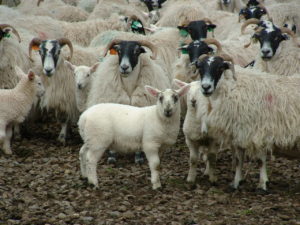Johne’s In Sheep A Risk To Your Cows
22 December 2016Johne’s disease is a bacterial disease which affects all ruminants and can be spread from sheep to cattle and vice versa. Infection usually occurs early in life through ingestion of infected faeces or milk. Affected sheep rarely develop the severe diarrhoea that is seen in cattle so it is more commonly seen in sheep as chronic weight loss.
A diagnosis can be reached by:
- Faecal testing ten of the poorest ewes through pooled culture and PCR.
- Individual blood samples of the poorest ewes for Johne’s antibody.
- Post mortem examination of 2-3 poor ewes at your local SAC laboratory. The advantage of this is that other causes of ill thrift can be investigated.
There is no treatment for Johne’s disease. The diagnostic tests are not effective at picking up infection in the early stages of disease and unlike the situation in cattle, test and cull is rarely used as part of the control in affected flocks. The spread of disease will be reduced in a flock by regular inspections and culling of any animals suspected to be infected and removal of their offspring. Vaccination is an option in sheep flocks and helps to prevent animals developing clinical Johne’s disease however it does not eliminate infection from the flock.
Johne’s in your sheep flock poses a risk to your beef cow herd. This can be best mitigated by preventing co-grazing or grazing of pasture with both sheep and cattle in the same year. Not grazing over the winter will reduce the amount of infection present on the pasture so reducing the risk of new infections. Any straw based manure should be composted to prevent recycling infection.
Lynn Gibson, Lynn.gibson@sac.co.uk
Sign up to the FAS newsletter
Receive updates on news, events and publications from Scotland’s Farm Advisory Service

